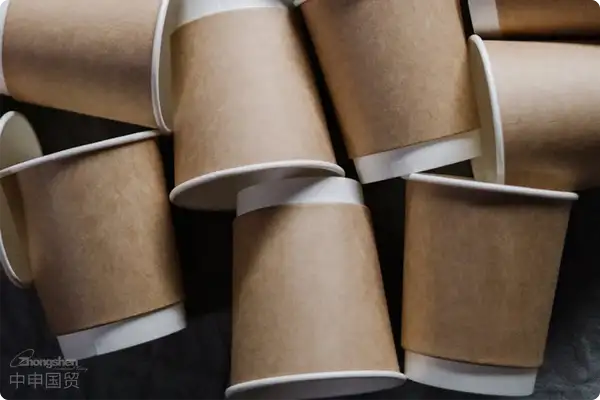- Shanghai Zhongshen International Trade Co., Ltd. - Two decades of trade agency expertise.
- Service Hotline: 139 1787 2118
Contents
ToggleWhen Paper Cups Meet International Trade: Things You Need to Know
Hello everyone, Im Lao Zhang with 20 years ofimport and exportLao Zhang from trade. Today I want to talk about a seemingly simple yet intricate product - theImport Representationins and outs of paper cups. Last week, a client had their imported paper cups detained by customs due to lack of industry knowledge - not only were the fluorescent agents超標(biāo) (exceeding standards), but they also lacked QS certification, truly suffering a double loss. So dont underestimate these small paper cups; importing them requires considerable expertise.

I. The "Clearance Code" for Imported Paper Cups: HS Code and Regulatory Requirements
First, we need to crack the "identity code" of the paper cup—the HS code. Based on my experience, paper cups are usually classified under...4823.90.00the following items, but specifics depend on material and purpose:
- Regular paper cups: Approximately 6% tariff, 13% VAT
- Wax-coated paper cups: May involve food contact material regulations
- Printed promotional cups: Need attention to intellectual property filings
Remember last year when a clients Starbucks co-branded cups were held at customs for two full weeks due to missing intellectual property filings? So,checking regulatory requirements in advanceis crucial! As food contact materials, paper cups must provide:
- Certificate of origin health certification
- Food contact material compliance declaration
- QS Certification (to be affixed upon arrival)
II. Prevention Guide for "Disasters" in International Transportation
Paper cups may look sturdy, but theyre quite delicate during transportation. Based on cases Ive handled, three issues most commonly occur during shipping:
- Moisture deformation: Always confirm whether the container has undergone moisture-proof treatment
- High damage rate: Recommend purchasingMaritime TransportationAll Risks insurance, with premiums around 0.3% of cargo value
- Sensitive product name: When declaring, do not write "food container"; it's safer to directly write "paper cup".
Heres a useful tip to share:Record video before container loading. Last year, a client successfully claimed compensation from the shipping company for moisture damage using loading video evidence.
III. Customs Clearance: Three Key Strategies to Avoid Quality Inspection Pitfalls
Customs clearance is the most critical stage for paper cup imports. According to the latest customs consumer alerts, pay special attention to:
- Mandatory inspection compliance: Paper cups are legally inspected goods requiring CIQ certification
- Quality Certificate: Prepare fluorescent agent test reports in advance (focus on benzidine compounds)
- Label rectification: Chinese labels including QS mark must be affixed to outer packaging
Here's a real-life case: An importer had packaging marked with "microwave-safe" labeling, but the batch in question hadn't undergone the corresponding testing. As a result, customs required complete rectification, increasing the cost by 80 yuan per carton. Sopre-approving packaging copyis absolutely essential!
IV. Post-Pickup "After-Sales" Service: The Details You Might Not Know
Many think everythings settled after clearance, but thats not the case. As professional agents, we typically advise clients to:
- Upon arrivalimmediately conduct sampling inspections, especially with first-time suppliers
- Warehousing environment shouldremain dry, with relative humidity ideally below 65%
- EstablishQuality Traceability System, with samples retained for at least six months per batch
Last year, we helped a client detect excessive fluorescent agents in a batch of paper cup rims. Thanks to complete sample retention, we successfully claimed full payment from the foreign supplier. This investment in testing proves far more cost-effective than post-sale disputes!
V. Special Reminders for Beginners: These "Pitfalls" Must Be Avoided at All Costs
Finally, as an industry veteran, Id like to offer some advice to newcomers preparing to import paper cups:
- Dont chase cheap prices: Some Southeast Asian manufacturers offer quotes 30% below market rates, often cutting corners on quality
- Reserve a buffer period: During sensitive periods (e.g., around March 15th), customs clearance may take 50% longer
- dual-header customs declaration: Dont worry if you lack import/export rights - just find a legitimate agent
Remember, importing paper cups isn't a "one-time deal." You need to find a reliable agent and establish a long-term, stable supply chain to gain a foothold in this industry. If you're still unsure, feel free to chat with me, Old Zhang—my 20 years of experience didn't come for nothing!
Next time we meet, perhaps we can discuss another interesting topic - the intricacies of importing paper tissues. After all, the pitfalls in paper product imports are far more numerous than you might imagine!
Related Recommendations
? 2025. All Rights Reserved. Shanghai ICP No. 2023007705-2  PSB Record: Shanghai No.31011502009912
PSB Record: Shanghai No.31011502009912










